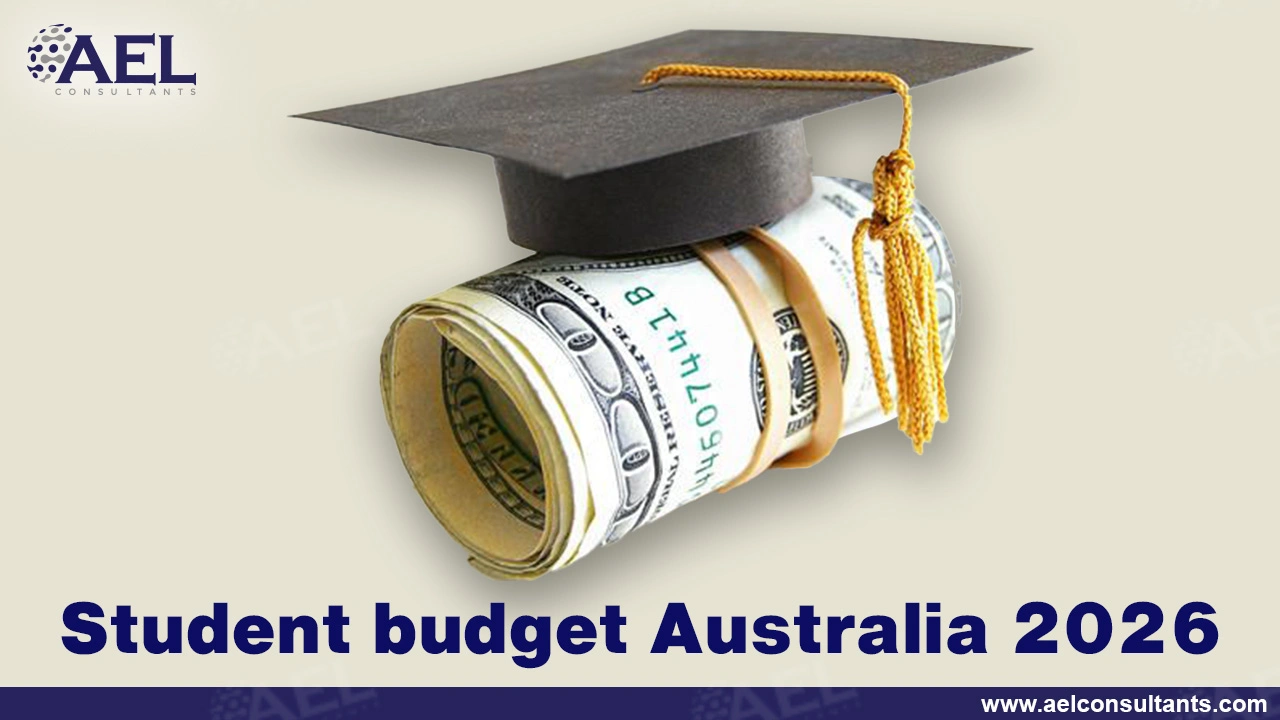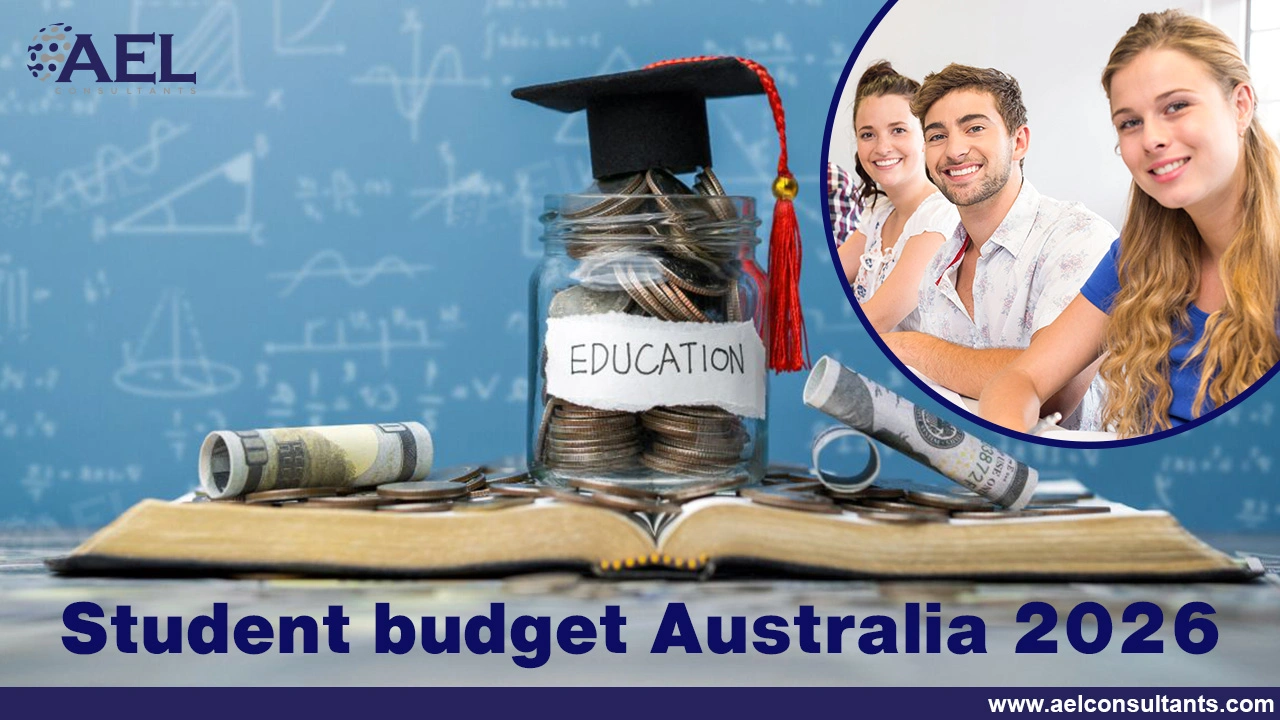For students in 2026, every dollar matters if they want to study abroad. Did you know that, just for living expenses, the typical foreign student in Australia spends between AUD 25,000 and 30,000 yearly? For everyone intending to study in Australia 2026, handling a student budget has become among the most crucial survival abilities.
With tuition costs, increasing rent, and inflation influencing daily expenses, prudent budgeting is about maintaining a balanced, stress-free student life rather than only saving money.
This post will help you with sensible cost of living projections, efficient methods to control costs, and realistic money-saving ideas that really work in 2026.
Knowing the Expenses of Education and Daily Living in Australia
1. Course-Related Charges and Tuition
The price of studying changes based on the institution and curriculum.
Undergraduate courses: annually AUD 20,000–45,000
Postgraduate courses: AUD 22,000–50,000 yearly
Vocational and TAFE programmes: annual AUD 5,000–20,000
Check always whether your institution has scholarships or research assistant positions available, since they can greatly lower your whole cost of education.
2. Living Expenses Australia: Practical Estimates
The Australian Government advises students to set aside at least AUD 24,505 annually for living expenses starting in 2026. This might be your monthly expenses:
- Rent: shared housing costs between AUD 600 and 1,200.
- Food and groceries: AUD 300–500
- Transportation: AUD 150-250
- Internet and utilities: AUD 100–150
- Oversight of health insurance (OSHC): AUD 45–55 a month
Higher rents mean that Sydney or Melbourne students could require up to 15–20% more, while those in smaller cities like Adelaide or Hobart remain more budget-friendly.
Effective Methods for 2026 Managing a Student Budget in Australia
1. Make a Practical Monthly Budget
First monitor your costs for at least one month. Frollo and Pocketbook, among other apps, automatically categorize your expenses by connecting with Australian bank accounts.
- An ideal budget distributes roughly:
- 50% on basics (food, rent, travel)
- 30% goes toward personal development and education
- 20 percent for crises or savings
Hundreds of dollars a year may be saved by even little routines like brewing coffee at home or using a reusable Myki travel card.
2. Apply Money-Saving Advice Australian Students Swear By
These are some concrete approaches to use every dollar to its fullest potential:
- Get used textbooks on Gumtree or StudentVIP.
- Make meals at home rather than rely on regular takeout.
- On public transportation and entertainment, take advantage of student discounts.
- Share housing to save as much as 40% of your rent.
- For student visa holders, limit part-time employment to 20 hours per week.
These Australian money-saving suggestions not only lower expenses but also foster discipline and time management skills that will help you long-term.

How to Juggle Study, Work, and Financial Security
Managing part-time employment with coursework may rapidly cause overload. Keep in mind that burnout-free financial stability is the objective.
First give essentials top priority: rent, education, and food before anything else.
Establish short-term savings objectives: Every week AUD 50 will help build a fund for emergencies.
Use banking apps to set a modest monthly income percentage to automatically transfer.
Wait 24 hours before buying anything non-essential to avoid impulse spending.
This methodical approach guarantees your financial stability as you concentrate on your studies.
Long-Range Planning: Financial Resilience Building
1. Start a bank account for students.
Commonwealth Bank, NAB, and ANZ among other Australian banks provide student accounts with no monthly fees and overseas transaction advantages.
To monitor real-time spending, always sync your bank account with your budgeting software.
2. Spend money learning about money
Financial literacy is as vital as intellectual accomplishment.
Attend student finance seminars at your institution or use free materials such as MoneySmart Australia. Learning about taxes, superannuation, and investments can help you get ready for life after college.
3. Make use of campus resources.
Most colleges give students free career guidance or budget counseling to assist them in locating part-time employment and controlling financial worry.
Smart Transportation Choices
Transportation can quickly eat into your student budget Australia 2026. Instead of using taxis or rideshares, consider Opal cards in Sydney or Myki in Melbourne, which offer significant discounts for students. Public transport weekly caps also help you save if you commute regularly.
If you live near campus, cycling or walking not only saves money but also boosts your physical and mental health. Another growing trend among students in 2026 is e-scooter sharing, which provides affordable, eco-friendly short-distance travel.
Use Technology to Track Your Finances
Budgeting apps such as Pocketbook, Frollo, and MoneyBrilliant automatically track spending and categorize expenses like rent, food, and utilities. Using these tools gives real-time insight into where your money goes, helping you make smarter adjustments. You can also set spending alerts and savings goals crucial for anyone balancing living costs in Australia with part-time income.
Watch Out for Hidden Costs
Don’t forget hidden expenses like medical insurance, phone plans, printing, and course materials. These may seem small but can add up to hundreds of dollars per semester. Planning for them ensures your student budget Australia 2026 remains realistic and stress-free.
Living and Education Cost: Brief Summary
Fees for Education
25,000–45,000 AUD
Residence Expenditures
24,000 to 30,000 AUD
Transportation
2,000–3,000 AUD
Medical Insurance (OSHC)
500 to 700 AUD
Others
1, 500–2, 000 AUD
Strategically planning your student budget Australia 2026 helps you avoid unanticipated shortages mid-semester by means of this breakdown.
Also, note that these expenses are not absolute figures and you need to suit your lifestyle to decide how much you can actually afford to spend.

Frequently Asked Questions
- As an Australian 2026 student, how much should I plan each month?
Depending on the city and way of life, most students pay between AUD 1,800 and 2,200 every month.
- Australia offers plenty of opportunities for part-time employment?
Indeed. During holidays, students can work full-time; during semesters, up to 20 hours each week. Typical employment include retail, tutoring, and hospitality.
- What are the most affordable places to live?
Adelaide, Canberra, and Hobart usually have cheaper living costs than Sydney or Melbourne.
- While pursuing studies in Australia, may I save money?
Yes, with regular meal preparation, budget, and shared housing you may save AUD 1,000–2,000 a year.
The Bottom Line
Australian 2026 student budget management is about balance, awareness, and careful planning rather than limiting oneself. Students may have a happy and reasonably priced academic experience if they know the true cost of living, develop sensible money-saving behaviors, and have financial discipline.
With the right attitude, your stay in Australia will not only enhance your knowledge but also improve your financial intelligence and independence qualities that will serve you for life.
Learn Better with AEL Advisors
Need professional guidance on university admissions, scholarships, and financial planning in Australia?
Call AEL. Consultants today are your dependable partner for customized direction, visa help, and financial planning so you can have a stress-free study abroad trip. Get the best experienced Australian education consultants on the planet and raise your chances of becoming valuable and employable in Australia!!
AEL Consultants helps you to realize your Australian study goal at a reasonable cost.





